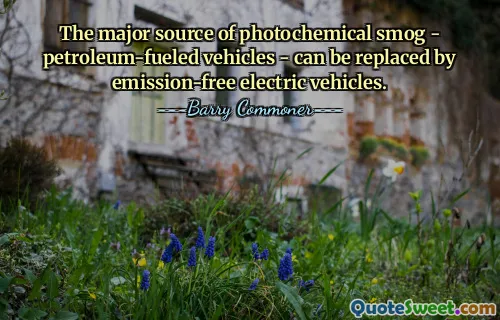
The major source of photochemical smog - petroleum-fueled vehicles - can be replaced by emission-free electric vehicles.
The statement highlights a pivotal shift in how society can address urban air pollution and environmental degradation. Photochemical smog, primarily generated by exhaust emissions from petroleum-based vehicles, has long been a significant health threat, contributing to respiratory problems, cardiovascular diseases, and environmental damage. Transitioning to emission-free electric vehicles (EVs) offers a compelling solution, as it directly tackles the root cause—tailpipe emissions. This shift not only reduces harmful pollutants like nitrogen oxides and volatile organic compounds but also lessens greenhouse gas emissions, contributing to broader efforts against climate change.
Evidently, adopting electric vehicles hinges on technological advancements that enable longer range, affordability, and better charging infrastructure. Additionally, the environmental benefits of EVs depend on the electricity source; cleaner energy grids maximize ecological advantages. Transitioning to electric vehicles also entails economic and social considerations, such as job creation in green technology sectors and the need for supportive policies.
Ultimately, replacing petroleum-fueled vehicles with electric counterparts symbolizes a sustainable approach that aligns technological innovation with environmental responsibility. It fosters healthier urban living spaces and exemplifies proactive steps toward reducing our carbon footprint. As society enhances infrastructure and renewable energy adoption, electric vehicles can become mainstream, bringing us closer to a cleaner, healthier future for generations to come.










